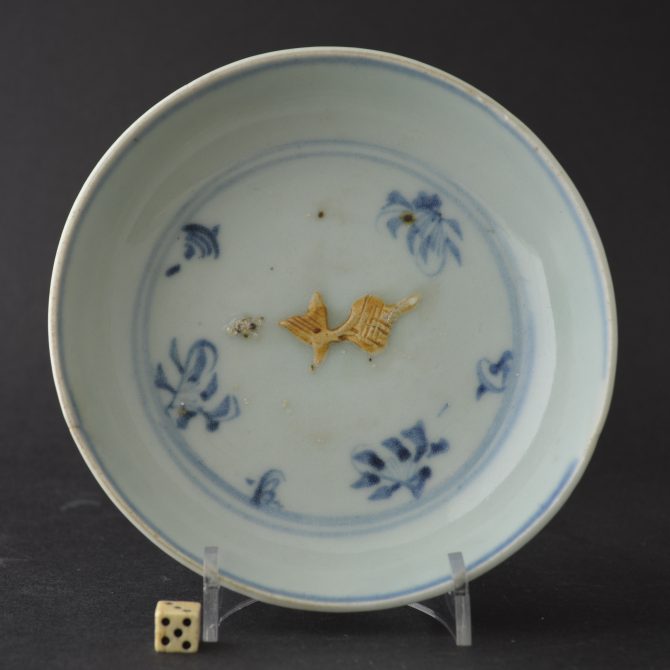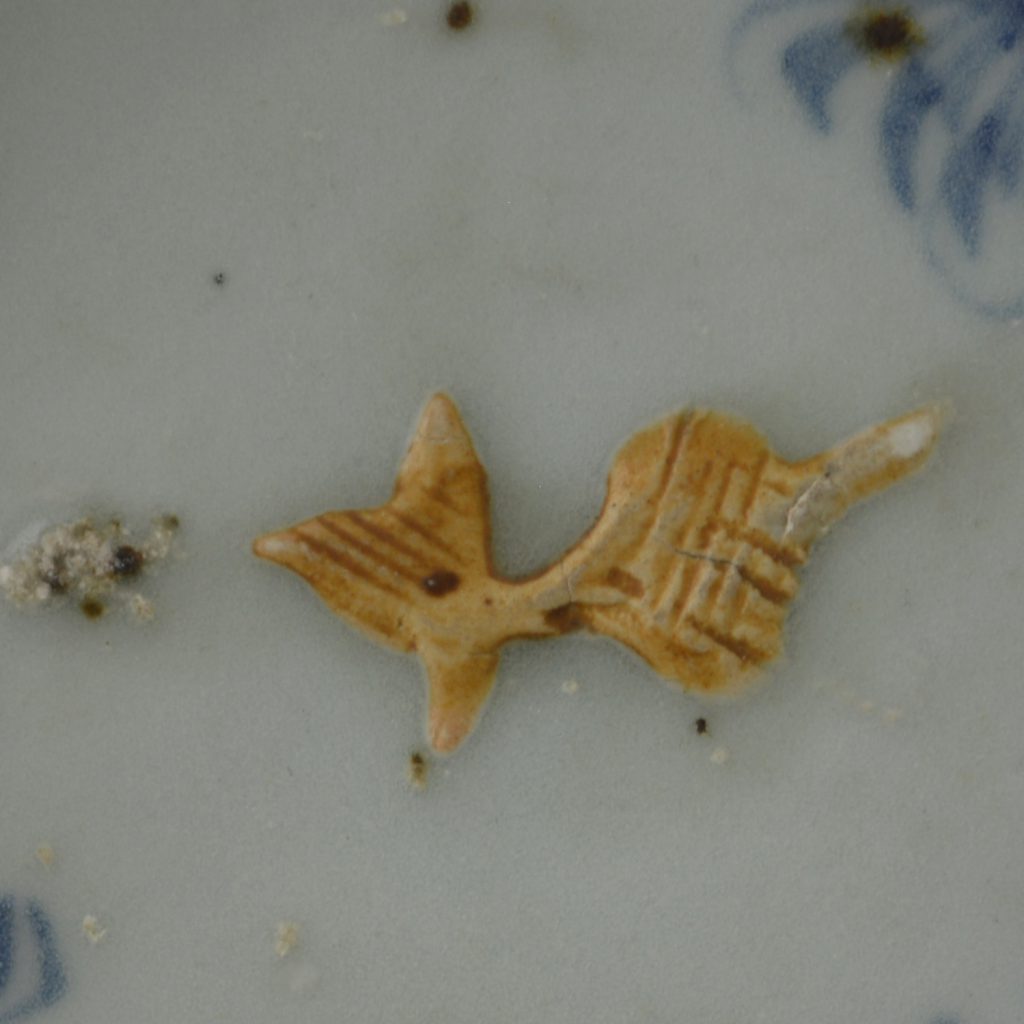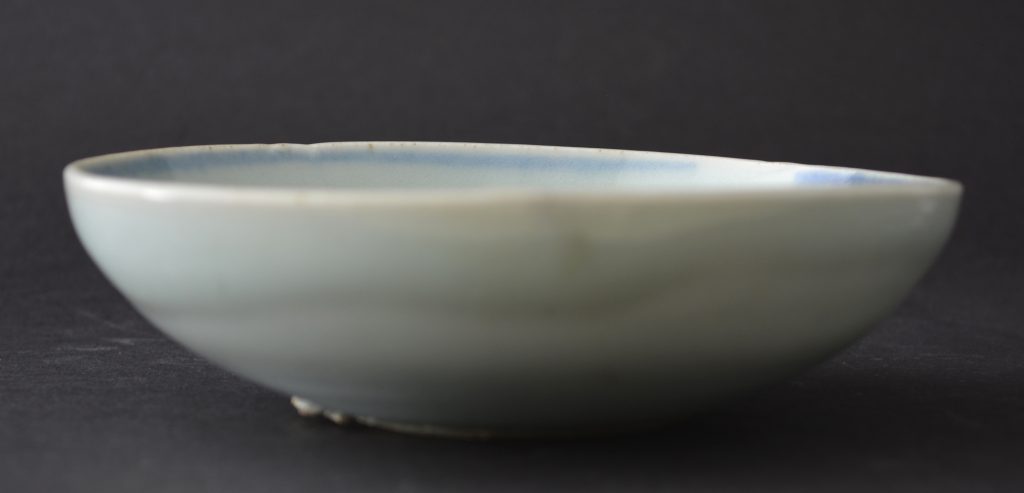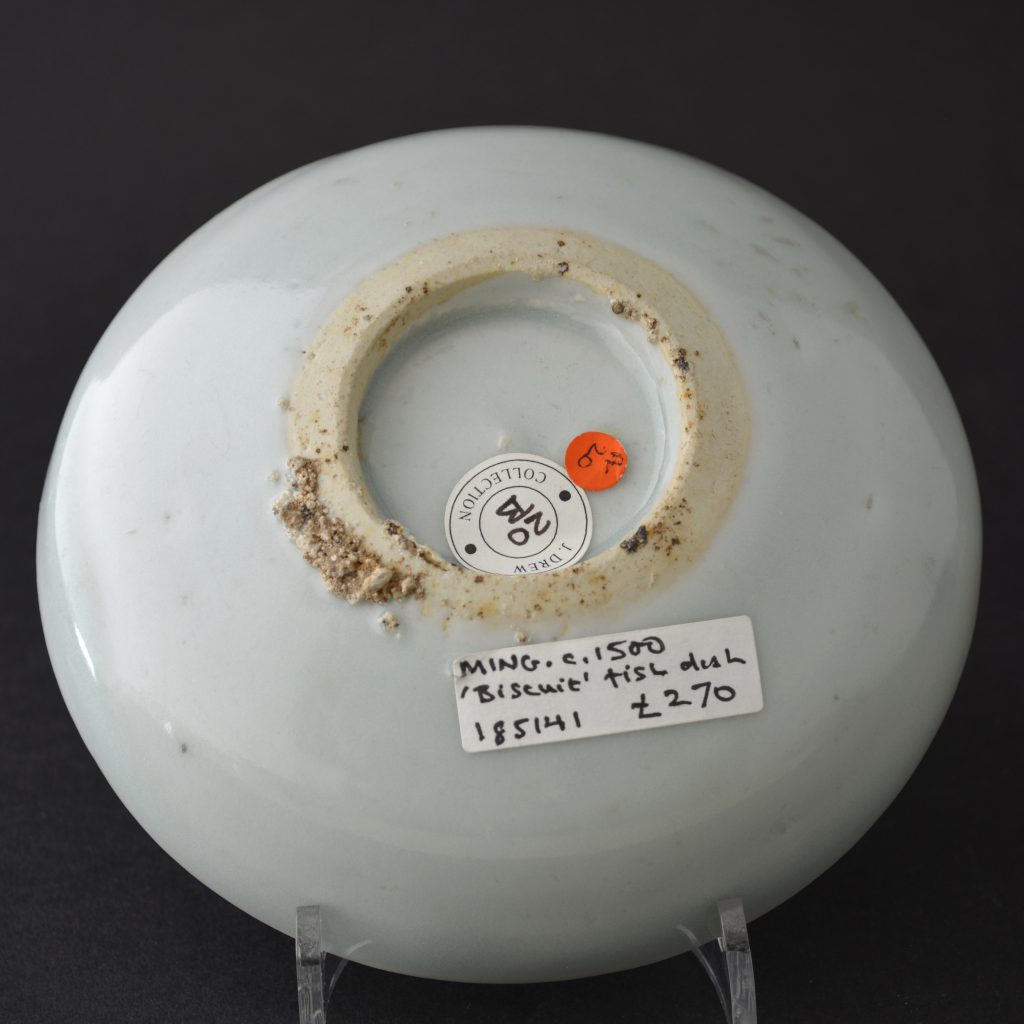
A Ming Porcelain Dish with a Fish in Relief, Hongzhi or Zhengde c.1500
A Ming porcelain dish, Hongzhi 1488-1505 or Zhengde 1506-1521. Decorated with a fish left unglazed and fired to an orange iron oxide colour. Painted in blue and White with aquatic plants. Of ‘Provincial’ type but made at Jingdezhen. These thickly potted dishes do not have a foot-rim as such but a rim of sorts is created by a circular indentation into the base. This type is sometimes referred to as the ‘Hole Base’ group.
SOLD
- Condition
- In excellent condition, some very minor wear. There is a piece of kiln grit in the glaze near the fish and there is also a firing crack to the rim.
- Size
- Diameter : 12.5 cm (5 inches)
- Provenance
- The John Drew Collection of Chinese and Japanese Ceramics.
- Stock number
- 185141
Information
Provincial Blue and White Ming Porcelain :
Pieces like the present Ming Porcelain example have traditionally been referred to as `Provincial Blue and White Porcelain` because the potting and painted appear as being some what rustic. Sometimes `provincial` pieces have a great strength and freedom that can be lacking in more refined objects. Recent research in China has shown that there was little Blue and White Porcelain produced outside the main kiln complex of Jingdezhen in Jiangxi Province. The exception might be Dehua in Fujian province but the Blue and White Porcelain production from those kilns is distinct from the kilns at Jingdezhen.
Fish / Yu :
The Chinese word for fish Yu is pronounced in the same way as the word for abundance. So fish have come to represent prosperity and the carp is often represented as sign of success because of its perseverance, swimming up river. Pairs of fish swimming together, representing marital bliss, were common from the Southern Song (1128-1279) but it was in the Yuan Dynasty (1279-1368) that fish swimming with aquatic plants became a common subject, the patterns were based on popular designs found in Southern China. Some of the earliest Chinese blue and white porcelain (c.1320-1350) depicts fish swimming with plants, frequently lotus as this represented purity. These Yuan designs were shown in the center of bowls and dishes surrounded by concentric geometric borders.It was not until the 16th century that freer, more open designs of fish swimming among sea weed and crabs were popular.


